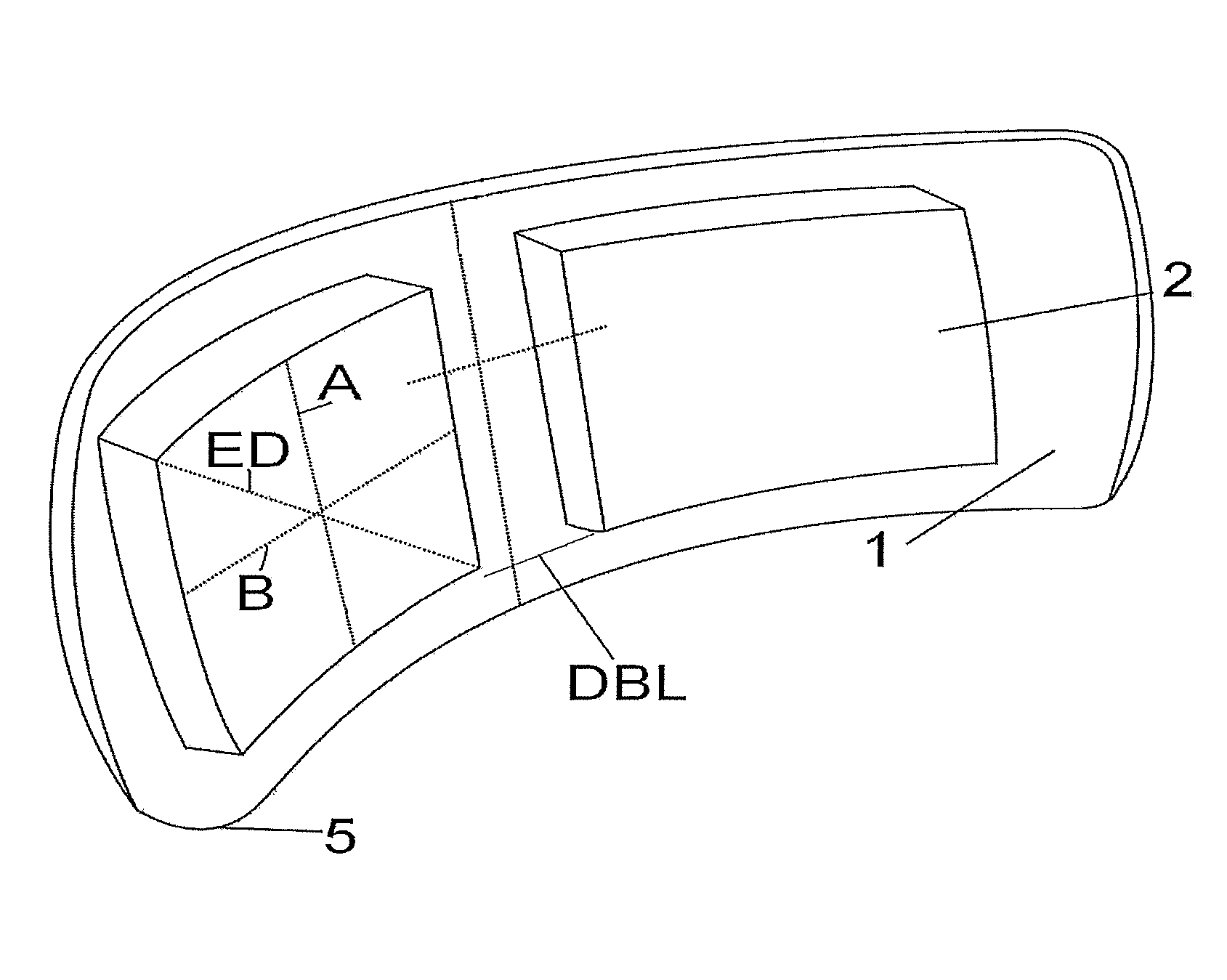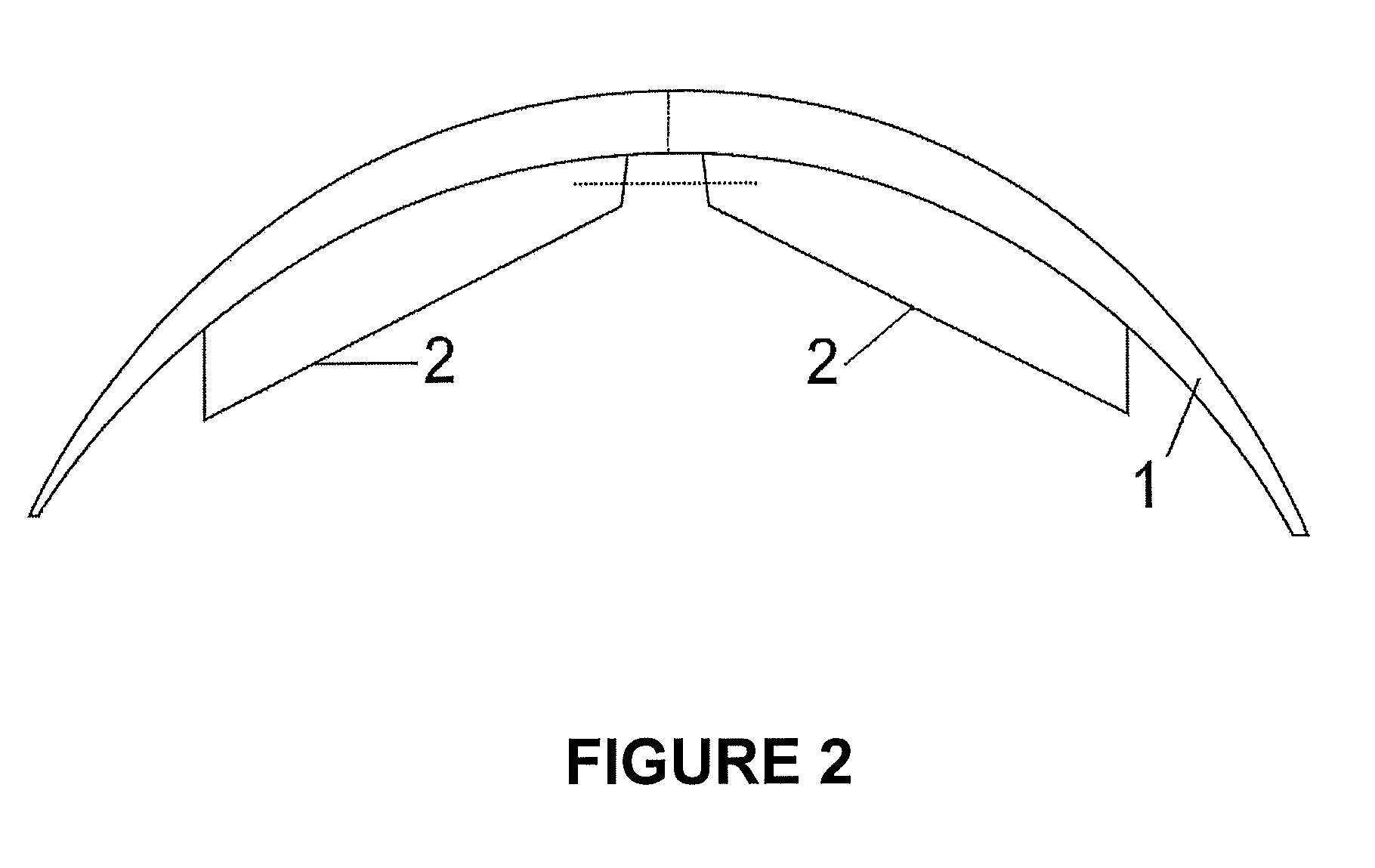One-piece lens with surplus inner optical material
a one-piece lens and optical material technology, applied in the field of optical devices, can solve problems such as limiting the assembly of eyeglasses, and sports lenses on large frames or with high base curves, and achieve excellent optical quality
- Summary
- Abstract
- Description
- Claims
- Application Information
AI Technical Summary
Benefits of technology
Problems solved by technology
Method used
Image
Examples
Embodiment Construction
[0028]In FIGS. 1 to 3, a wrap-around panoramic one-piece lens is shown with integrated surplus amount 2 of optical material for the making of the integrated ophthalmic lenses of the instant invention.
[0029]The lens 1 comprises an external base curve that can have a torical, bitoric, spherical, bispherical, cylindrical, bicylindrical, aspheric, biaspheric base or combinations thereof for use in neutral non-ophthalmic lenses and in ophthalmic correction prescription lenses.
[0030]The wrap-around panoramic one-piece lens 1 can be produced under any known injection or casting method and produced in any number of external and / or internal base and made of any type of optical material indicated for ophthalmic and non-ophthalmic lenses.
[0031]The manufacturing material can be transparent, photochromatic, shaded, with mirrored characteristics or of any other embodiment, treatment or covering for ophthalmic and non-ophthalmic lenses placed in the front or back side, or on both sides.
[0032]One f...
PUM
 Login to View More
Login to View More Abstract
Description
Claims
Application Information
 Login to View More
Login to View More - R&D
- Intellectual Property
- Life Sciences
- Materials
- Tech Scout
- Unparalleled Data Quality
- Higher Quality Content
- 60% Fewer Hallucinations
Browse by: Latest US Patents, China's latest patents, Technical Efficacy Thesaurus, Application Domain, Technology Topic, Popular Technical Reports.
© 2025 PatSnap. All rights reserved.Legal|Privacy policy|Modern Slavery Act Transparency Statement|Sitemap|About US| Contact US: help@patsnap.com



